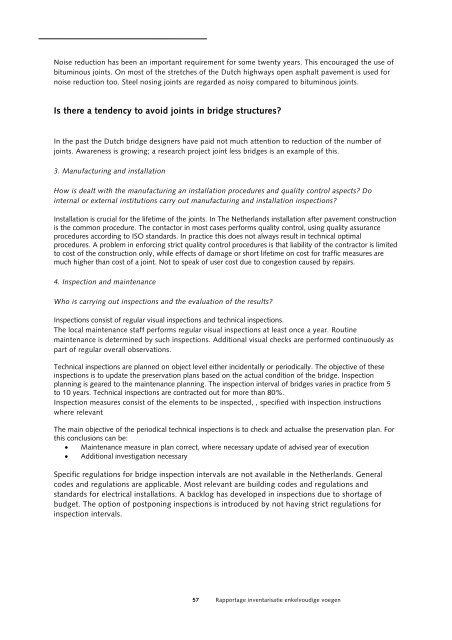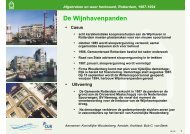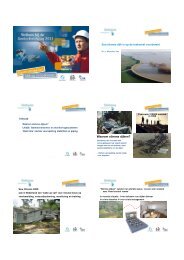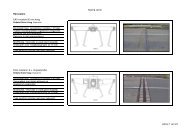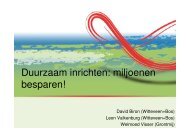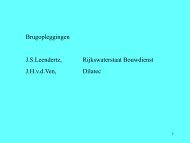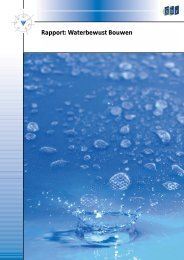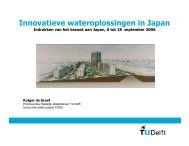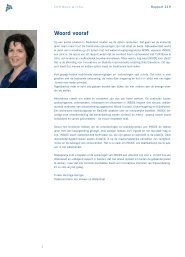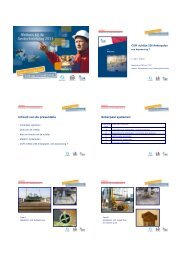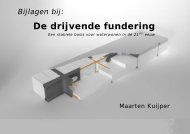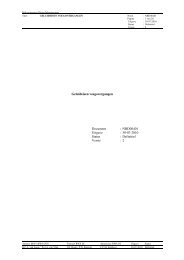Rapportage inventarisatie enkelvoudige voegen - Curnet
Rapportage inventarisatie enkelvoudige voegen - Curnet
Rapportage inventarisatie enkelvoudige voegen - Curnet
You also want an ePaper? Increase the reach of your titles
YUMPU automatically turns print PDFs into web optimized ePapers that Google loves.
Noise reduction has been an important requirement for some twenty years. This encouraged the use of<br />
bituminous joints. On most of the stretches of the Dutch highways open asphalt pavement is used for<br />
noise reduction too. Steel nosing joints are regarded as noisy compared to bituminous joints.<br />
Is there a tendency to avoid joints in bridge structures?<br />
In the past the Dutch bridge designers have paid not much attention to reduction of the number of<br />
joints. Awareness is growing; a research project joint less bridges is an example of this.<br />
3. Manufacturing and installation<br />
How is dealt with the manufacturing an installation procedures and quality control aspects? Do<br />
internal or external institutions carry out manufacturing and installation inspections?<br />
Installation is crucial for the lifetime of the joints. In The Netherlands installation after pavement construction<br />
is the common procedure. The contactor in most cases performs quality control, using quality assurance<br />
procedures according to ISO standards. In practice this does not always result in technical optimal<br />
procedures. A problem in enforcing strict quality control procedures is that liability of the contractor is limited<br />
to cost of the construction only, while effects of damage or short lifetime on cost for traffic measures are<br />
much higher than cost of a joint. Not to speak of user cost due to congestion caused by repairs.<br />
4. Inspection and maintenance<br />
Who is carrying out inspections and the evaluation of the results?<br />
Inspections consist of regular visual inspections and technical inspections.<br />
The local maintenance staff performs regular visual inspections at least once a year. Routine<br />
maintenance is determined by such inspections. Additional visual checks are performed continuously as<br />
part of regular overall observations.<br />
Technical inspections are planned on object level either incidentally or periodically. The objective of these<br />
inspections is to update the preservation plans based on the actual condition of the bridge. Inspection<br />
planning is geared to the maintenance planning. The inspection interval of bridges varies in practice from 5<br />
to 10 years. Technical inspections are contracted out for more than 80%.<br />
Inspection measures consist of the elements to be inspected, , specified with inspection instructions<br />
where relevant<br />
The main objective of the periodical technical inspections is to check and actualise the preservation plan. For<br />
this conclusions can be:<br />
• Maintenance measure in plan correct, where necessary update of advised year of execution<br />
• Additional investigation necessary<br />
Specific regulations for bridge inspection intervals are not available in the Netherlands. General<br />
codes and regulations are applicable. Most relevant are building codes and regulations and<br />
standards for electrical installations. A backlog has developed in inspections due to shortage of<br />
budget. The option of postponing inspections is introduced by not having strict regulations for<br />
inspection intervals.<br />
57 <strong>Rapportage</strong> <strong>inventarisatie</strong> <strong>enkelvoudige</strong> <strong>voegen</strong>


